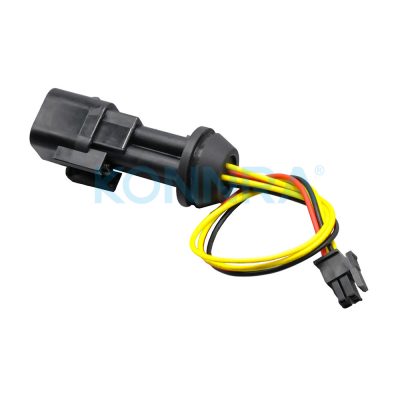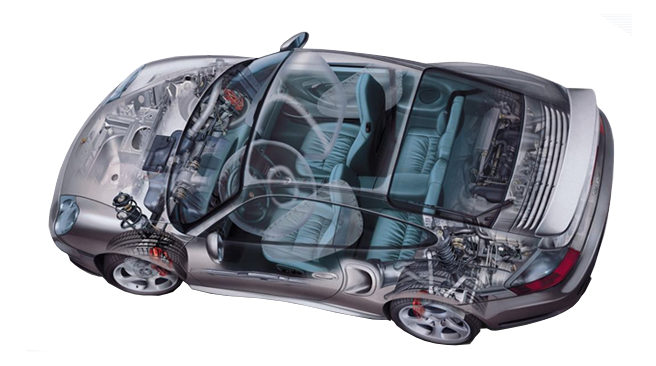Connectors (also called connectors) are an important part of the wiring harness and are used to connect and protect the wiring harness. Because there are many connection points in the connector, any problem at any point may have very serious consequences and even lead to a traffic accident. Therefore, in the automotive circuit design process, the reasonable selection of connectors plays a vital role. This article briefly analyzes the selection method of wire harness connectors from three aspects: electrical performance, mechanical performance and environmental performance.
- Connectors are components used to connect wires, so their electrical properties must first be considered
Electrical performance mainly considers voltage, current, resistance and insulation
Rated voltage refers to the operating voltage, and its value depends on the terminal spacing and insulating material. The maximum operating voltage provided by the connector manufacturer is generally 12V or 24V, while the voltage provided by the manufacturer is generally 50V. The rated voltage of new energy vehicle high-voltage connectors is as high as 600V. The second is the rated current, which is the same as the rated voltage, usually slightly higher than the normal operating voltage
Usually, the current rating of a connector is tested for its heat resistance at room temperature. When the temperature exceeds the set value, it will cause circuit failure. The product manual will provide the rated current, which is the maximum operating current at room temperature. For high temperature operating environments and multi-hole connectors, the current rating provided by the supplier cannot be simply used for selection. The connector that meets the working environment temperature and required operating current of the connector should be determined based on the temperature-current curve of the connector.
For multi-hole connectors, especially in the case of high currents, the actual selection should be reduced based on the number of holes in the connector. From a connector contact resistance perspective, small-signal circuits should consider contact resistance measured under low-level contact resistance test conditions. For small-signal circuit connectors that cannot meet the requirements of ordinary tin-plated terminals, noble metal coatings (such as silver or gold plating) can be considered
Finally, the insulation performance of the connector mainly refers to the insulation resistance and insulation dielectric strength, which can be measured to obtain a specific value, which needs to be selected by integrating the insulation materials used in the connector and the working environment.

- The mechanical force and life of the connector are mainly related to the mechanical force of the connector
As the name suggests, insertion force is the force required to separate a plug from an outlet. Under the premise of ensuring normal power supply, the smaller the blocking force, the better. Excessive plug-in and pull-out force may cause the plug to be unplugged smoothly, while too little plug-in and pull-out force may cause poor contact. The maximum insertion and extraction force of vehicle connectors is generally not greater than 75n. Therefore, on the premise of ensuring normal power supply, the smaller the blocking force, the better. Mechanical life refers to the number of times it can be plugged and unplugged
The mechanical life of general electrical connectors is generally 500-1000 times, while vehicle connectors generally meet the requirements for normal conductivity after being plugged and unplugged 10 times, silver-plated terminals have normal conductivity after being plugged and unplugged 30 times, and gold-plated terminals have normal conductivity after being plugged and unplugged 100 times. Conductivity is normal. The bonding force between the terminal and the jacket is affected by the crimp diameter of the terminal. When it is less than 1mm2, the bonding force is not less than 15N; when it is greater than 1mm2, the bonding force is not less than 30n. The separation force between the terminal and the jacket is related to the specification of the connector. For connectors with specifications lower than 2.8 and higher than 2.8, the separation force should be greater than 40n and 60N

- Environmental performance
Vehicle connectors wiring harness are widely used and the environments in different parts of the vehicle are often very different. Environmental factors mainly include temperature, humidity, waterproofing, dustproofing, etc. Its temperature is divided into five levels. The test temperature is generally slightly higher than the ambient temperature.
When selecting, first determine the corresponding temperature level based on the location, and then make the most reasonable selection based on the sheath and terminal materials. The humidity of the connector should not be too high, as it is easy to cause short circuit problems in a humid environment. Therefore, sealed connectors should be selected in humid environments
Different locations on the vehicle have different levels of air humidity and water interference, and require different levels of waterproofing. Generally speaking, waterproof sheathing should be selected for the cabin, the lower part of the chassis and engine, the seats near the chassis and the bottom of the doors. Consider using non-waterproof connectors inside the cab, upper doors and seats.
Conclusion The selection of connectors is a task that must be paid attention to and done well in the vehicle wiring harness design process. It is not only related to the stable operation of the vehicle circuit, but also affects the overall use of the vehicle. During the actual selection process, the electrical performance, mechanical performance and environmental performance of the connector should be analyzed to meet the basic requirements for power transmission and electrical signal transmission. Combined with the characteristics and performance of the vehicle, select the most appropriate connector to achieve the ideal wiring effect.










